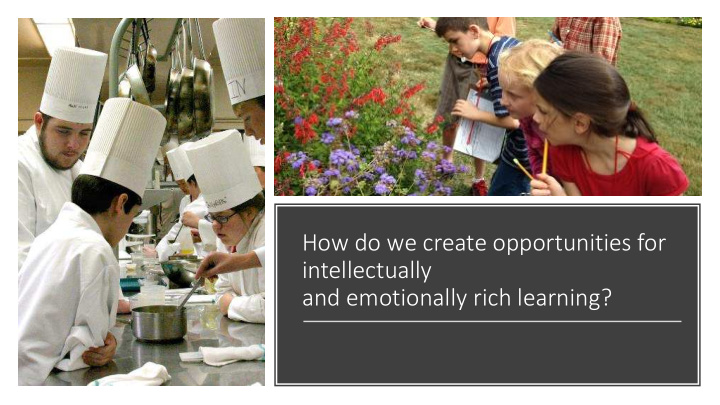



How do we create opportunities for intellectually and emotionally rich learning?
Attributes to Personalize 6
3
Curiosity as a Starting Place
Using Question Formulation Technique “In Allison Gauthier’s classroom, the questions that her students created inform their learning for the unit. By sharing questions, researching together, and presenting their findings with the class, students naturally met the Earth science goals of the unit as well as some of the high school's transferable skills. This process can be followed over and over again with different artifacts to really get students thinking about the content they will be expected to learn in the classroom.” — Center for Collaborative Education
Winooski iLab Learning Plan
Types of Questions Essential Questions Driving Questions • Teacher generated • Student generated • Written in student-friendly • Inspired by Essential Question language • Guide research, action and • Promote inquiry in the topic, creation skill, or concept • Optimize student ownership 9
Illustrative Example: Science Essential Questions Driving Questions • What is photosynthesis? • How does photosynthesis work? How do living things get • How do plants get energy from energy? the sun in places where it rains a lot of the time? • Do plants look different in places that are dry and sunny versus places where it rains a lot? 10
Illustrative Example: World Languages Essential Questions Driving Questions • What is The Day of the Dead about? How do cultural artifacts • How does it compare to and practices reveal the Halloween? beliefs and values of a • Why is it important to the people? Mexican people? 11
Illustrative Example: English Language Arts Essential Questions Driving Questions • What caused the Civil War in the United States? • Was the Civil War really only about slavery? What was the Civil War • What was the war’s legacy? Who did really fought over? it really help, and who did it hurt? • How has the United States progressed as a nation? • What core issues today in the United States show that the battle for equality is not over? 12
Idea Generation 13
Idea Generation 14
Virtual Art Tours from Around the World https://artsandculture.google.com/
https://www.gapminder.org/dollar-street/ Toys From Around the World
Putting a Human Face on Statistics
What’s in the Headlines from Cities around the World
Illustrative Example: “Be the Change” 7 th Grade Capstone project requires students to design a solution to a problem. 1. Become experts in a topic of their choice and identify issues related to that topic (empathy). 2. Look for greater understanding of issue by examining it from different perspectives and through the lens of a variety of disciplines (definition / integrated thinking). 3. Brainstorm ideas for solutions and evaluate each of the solutions for reasonableness and potential of success (ideation). 4. Select a solution to try and create a model (prototype). 5. Put idea / prototype out to others (colleagues, experts, stakeholders, etc.) for feedback (testing). 6. Using feedback, prototype and implementation plans are revised and then implemented. 19
Illustrative Example: Value Added Collaborate to develop and execute an idea that will contribute to the aesthetic beauty and health of a place or community. This development process includes: • survey of the area/neighborhood to determine current condition • interview people who use the space to find out their concerns and ideas • propose and get approval for the project • develop a plan of action and complete the task 20
• Forbes: Top 25 Ideas that Could Change the World • United Nations: 17 Goals to Transform Our World Other Ideas to • Critical Issues from Environment Virginia Inspire Action • Immigration in State of Virginia • State of Obesity in Virginia • The Globe Program: Collect, Document and Visualize Data • Social Justice Issues through Mathematics
22
Co-Creating via Backward Design Stage 1: Identify Desired Results Unit Expectations Inquiry / Idea Generation Stage 2: Determine Acceptable Evidence Practice Application Stage 3: Design Learning Plan Direct Instruction Coaching
Based on the examples seen so far, what are the implications for instructional design?
Flowchart to Visualize Learning Process
Various Ways of Imagining Time, Grouping, and Space
Recommend
More recommend